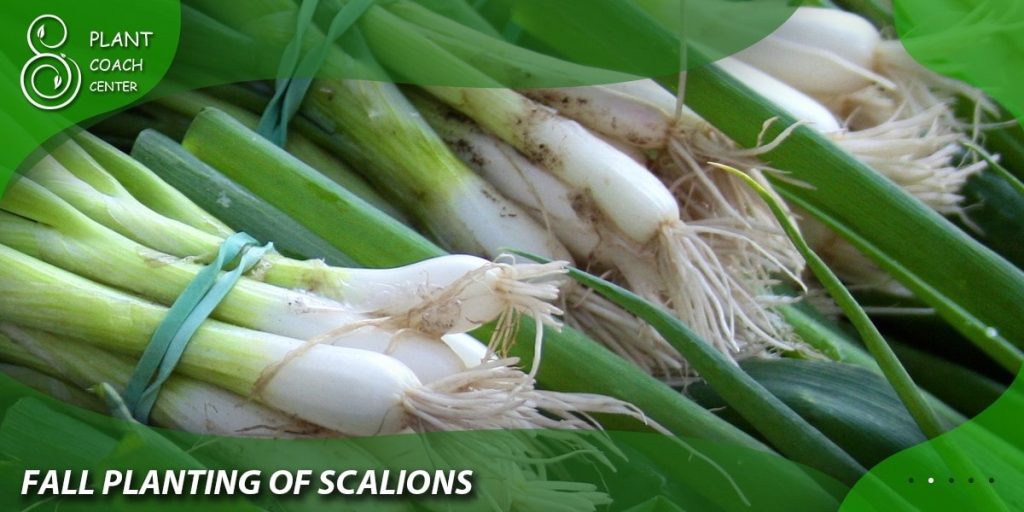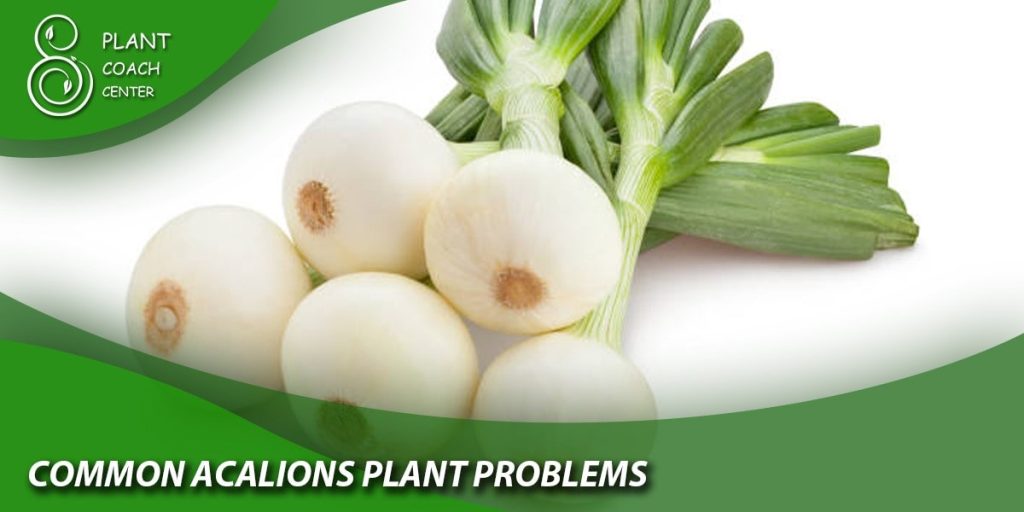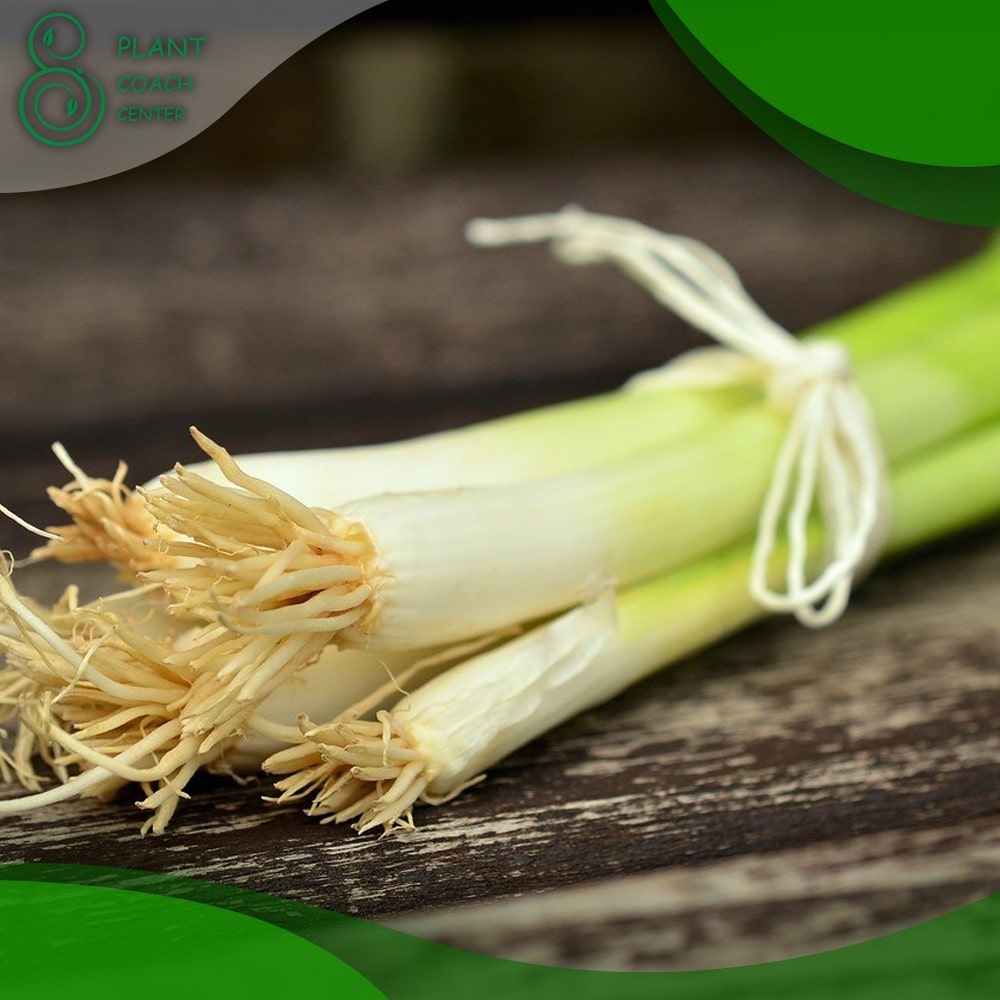When to Plant Scallions
Scallions, also known as green onions or spring onions, are versatile and flavorful additions to a variety of dishes. Knowing the optimal timing for planting scallions is crucial for ensuring their successful growth and bountiful harvests. In this comprehensive guide, we will explore the factors influencing scallion planting dates, regional variations in planting seasons, and advanced techniques that can maximize your scallion cultivation.
Additionally, we will discuss common scallion plant problems and their solutions, as well as the valuable role of plant coaching in achieving gardening success. Throughout this article, we invite you to visit PlantCoachCenter.com, a trusted resource for expert gardening advice and support.

Understanding Scallions and Their Growing Requirements
Scallions, with their mild onion flavor, belong to the Allium genus and are characterized by their slender green leaves and white bulbs. To ensure successful scallion growth, it’s essential to understand their specific growing requirements:
– Soil Type, pH Level, and Drainage: Scallions thrive in loose, well-draining soil with a pH range of 6.0 to 7.5. Amending heavy clay soil with organic matter can improve drainage and promote healthy root development.
– Sunlight and Temperature Requirements: Scallions prefer full sun but can tolerate partial shade. They grow best in temperatures between 55°F and 75°F (13°C to 24°C).

Factors Influencing Scallion Planting Dates
Several factors influence the ideal planting dates for scallions. By considering these factors, you can determine the most suitable time for planting in your specific region:
– Climate Considerations: Understanding your local climate is crucial for successful scallion planting. Take into account the average temperatures, rainfall patterns, and length of the growing season in your area.
– Local Weather Patterns: Monitor your local weather forecasts, paying attention to temperature fluctuations and the last frost date in the spring or the first frost date in the fall. Scallions are typically cool-season crops and can tolerate light frosts.
– Soil Temperature and Moisture: Soil temperature plays a vital role in scallion germination and growth. Wait until the soil has reached a consistent temperature of around 50°F (10°C) before planting scallion seeds or sets. Adequate soil moisture is also crucial for successful establishment.
Regional Variations in Scallion Planting Seasons
The planting seasons for scallions can vary depending on regional climates and conditions. Here’s a closer look at scallion planting recommendations for different regions:
- Scallion Planting Recommendations for Temperate Climates
In temperate climates with moderate temperatures, consider the following guidelines for scallion planting:
– Spring Planting: In temperate regions, spring is an ideal time to plant scallions. Wait until the soil has warmed up and is workable, typically around early spring.
– Fall Planting: Some temperate regions also allow for fall planting of scallions. Plant them a few weeks before the first frost date to ensure they establish roots before winter.
- Scallion Cultivation in Arid and Semi-Arid Regions
Arid and semi-arid regions present unique challenges for scallion cultivation. Adapt your planting techniques accordingly:
– Water Management: In regions with limited water availability, it is crucial to practice efficient watering techniques such as drip irrigation or mulching to conserve moisture.
– Shade and Sun Protection: Scallions can benefit from partial shade during the hottest parts of the day to prevent excessive heat stress.
- Challenges and Strategies for Scallion Planting in Cold Climates
Planting scallions in regions with harsh winters requires specific strategies to protect them from freezing temperatures:
– Winter Protection: In cold climates, consider using row covers, cloches, or cold frames to shield scallions from freezing temperatures and extend the growing season.
– Fall Planting: Opt for fall planting to allow scallions to establish roots before winter sets in. Mulching can provide additional insulation during the colder months.
- Scallion Planting Guidelines for Coastal and Humid Areas
Coastal and humid regions have their own unique considerations for scallion planting. Here’s what to keep in mind:
– Moisture Management: Excess moisture can lead to root rot and fungal diseases in scallions. Ensure proper soil drainage and avoid overwatering.
– Air Circulation: Good air circulation is essential in coastal and humid areas to prevent the buildup of humidity and reduce the risk of fungal infections.
Spring Planting of Scallions
Spring planting offers its own set of advantages and considerations for scallion cultivation. Here’s how to make the most of this planting season:
– Preparing the Soil: Before planting scallions in the spring, prepare the soil by removing weeds, incorporating organic matter, and ensuring proper drainage. A well-prepared bed provides a favorable environment for scallion growth.
– Sowing Scallion Seeds or Transplanting Seedlings: You have two options for spring planting: sowing scallion seeds directly into the prepared soil or transplanting seedlings started indoors. Follow seed packet instructions for proper sowing depth and spacing.
– Managing Weeds and Pests: Regularly monitor your scallion beds for weeds and promptly remove them to minimize competition for resources. Implement pest management strategies, such as companion planting and organic insecticides, to protect scallions from common pests like thrips or onion maggots.

Fall Planting of Scallions
Fall planting provides its own unique benefits and considerations when it comes to scallion cultivation. Follow these guidelines for successful fall-planted scallions:
– Benefits of Fall Planting: Fall planting allows scallions to establish strong root systems during the cool weather, resulting in robust growth and earlier harvests the following year.
– Soil Preparation Techniques: Prepare the soil by removing any weeds or previous crop residues. Incorporate compost or well-rotted organic matter to enrich the soil and enhance its structure.
– Selecting Scallion Plants or Propagating from Sets: Instead of starting from seeds, fall planting often involves using scallion sets or transplants. Select healthy sets with firm bulbs or purchase young seedlings from reputable nurseries.
– Winter Protection and Management: Prioritize winter protection by applying a layer of mulch around the scallion plants. This mulch helps insulate the soil, preventing freezing and thawing cycles that can damage the roots.
Advanced Techniques for Scallion Planting
To take your scallion cultivation to the next level, consider employing some advanced techniques that can optimize growth and yield:
– Utilizing Raised Beds and Containers: Raised beds offer improved soil drainage, better temperature control, and easier weed management. Alternatively, you can grow scallions in containers, which allows for greater flexibility in terms of placement and mobility.
– Companion Planting and Intercropping: Pair scallions with compatible companion plants like carrots, lettuce, or herbs. Intercropping scallions with other vegetables optimizes space utilization and can provide natural pest control benefits.
– Precision Planting Methods: Employ precise planting techniques such as using a dibber or ruler to ensure consistent spacing between scallion plants. Proper spacing allows for optimal air circulation and reduces the risk of disease.
– Soil Amendments and Nutrient Management: Regularly test the soil for nutrient deficiencies and adjust accordingly. Supplement the soil with organic fertilizers or compost to provide the necessary nutrients for healthy scallion growth.

Common Scallion Plant Problems and Solutions
Despite your best efforts, scallions may encounter some common plant problems. Here are solutions to address these issues:
– Identifying and Addressing Common Diseases: Learn to recognize common scallion diseases like downy mildew, fusarium basal rot, or rust. Implement proper crop rotation, practice good sanitation, and consider using disease-resistant varieties to minimize the risk of infection.
– Managing Pests and Insect Infestations: Keep a close eye on scallions for signs of pests like thrips, onion maggots, or aphids. Implement integrated pest management strategies such as using insecticidal soaps, introducing beneficial insects, or employing physical barriers.
– Nutrient Deficiencies and Corrective Measures: Yellowing leaves, stunted growth, or poor bulb formation can indicate nutrient deficiencies. Conduct soil tests to identify specific deficiencies and address them through targeted fertilizer applications or organic amendments.
– Troubleshooting Growth Issues: If scallions exhibit slow growth, wilting, or irregular bulb formation, consider factors like improper watering, insufficient sunlight, or overcrowding. Adjust these factors accordingly to promote healthier growth.
The Role of Plant Coaching in Scallion Cultivation
Plant coaching plays a valuable role in achieving gardening success, including scallion cultivation. PlantCoachCenter.com is a trusted resource that offers expert guidance and support for gardeners. Here’s how plant coaching can benefit your scallion growing endeavors:
– Personalized Guidance: Plant coaching provides personalized advice tailored to your specific needs and gardening conditions. You can receive guidance on scallion planting dates, techniques, and troubleshooting, ensuring that you make informed decisions.
– Knowledge and Expertise: Plant coaches possess extensive knowledge and expertise in various aspects of gardening, including scallion cultivation. They can share valuable insights, techniques, and best practices to help you optimize your scallion growing experience.
– Problem Solving and Support: If you encounter challenges or have questions during your scallion growing journey, plant coaching offers prompt problem-solving and support. You can receive assistance with identifying and addressing issues specific to your scallion plants.
– Continuous Learning: Plant coaching encourages continuous learning and skill development. You can expand your knowledge of scallion cultivation techniques, explore new approaches, and stay updated on the latest advancements in the field.
– Motivation and Encouragement: Plant coaches provide motivation and encouragement, helping you stay engaged and inspired throughout your scallion growing process. They can offer reassurance, celebrate your successes, and provide guidance during setbacks.
Conclusion
Scallions, with their versatile flavor and culinary uses, can be a rewarding addition to your garden. By understanding the factors influencing scallion planting dates, regional variations in planting seasons, and employing advanced techniques, you can maximize your scallion cultivation and achieve abundant harvests. Additionally, being aware of common scallion plant problems and their solutions, along with the valuable role of plant coaching, can further enhance your gardening experience.
For comprehensive gardening advice, tips, and personalized support, visit PlantCoachCenter.com. Explore their resources and connect with plant coaches who can guide you through every step of your scallion growing journey. Happy gardening and enjoy the bountiful harvest of fresh, flavorful scallions!







